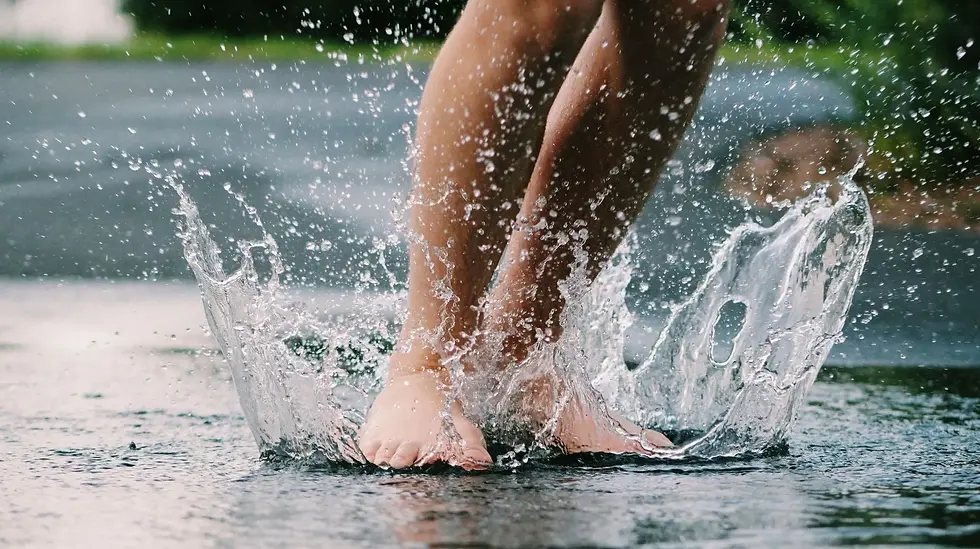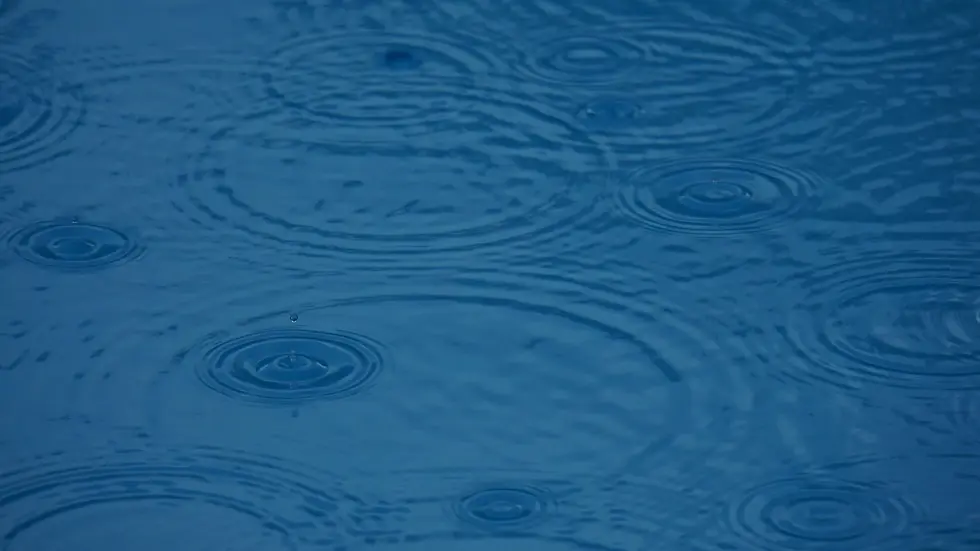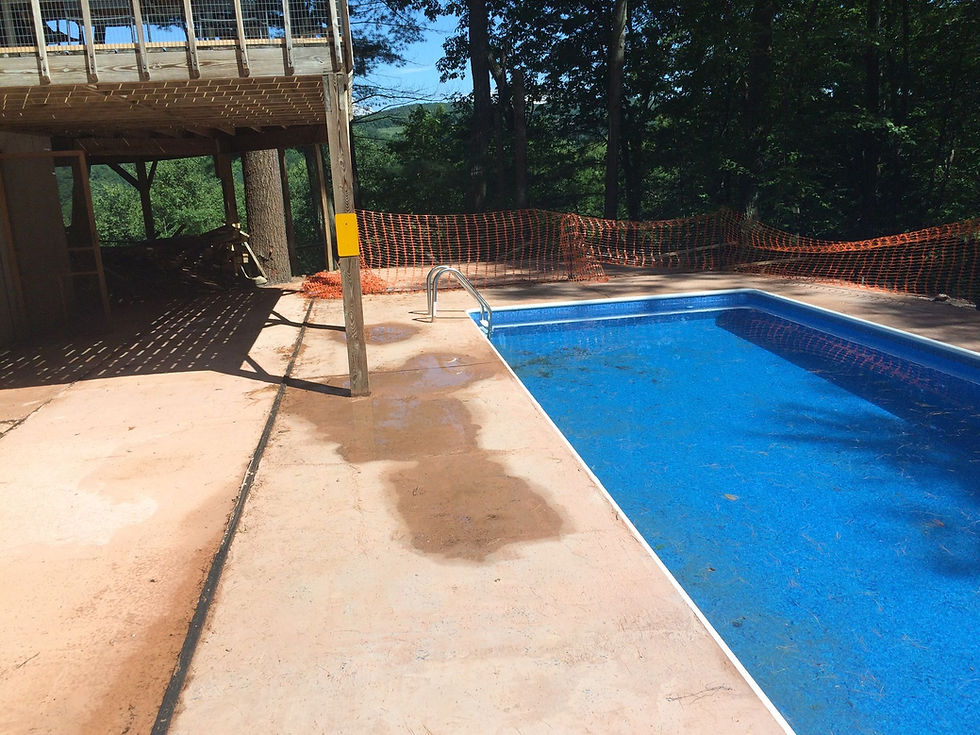How Rainwater Affects Your Pool Chemistry and What to Do About It
- Design Team
- Jul 21
- 3 min read

How Summer Storms Disrupt Water Chemistry
Summertime in the Hudson Valley means cookouts, pool parties, and — like clockwork — sudden summer storms. While a passing rain shower might cool things down, it can also throw your pool’s water chemistry into chaos. Whether it’s a light sprinkle or a torrential downpour, rainwater has a measurable impact on your pool’s pH, sanitizer levels, and overall water quality.
At The Pool Chemist, we help homeowners maintain clean, safe, and properly balanced pools — no matter what the weather brings. In this article, we explain how rain affects your pool chemistry and what steps you should take after a storm to keep your water clear and inviting.

Why Rainwater Throws Off Your Pool Chemistry

Rain might look clean, but chemically speaking, it is anything but neutral. Most rainwater is slightly acidic, with a pH below 7 — often in the 5.0 to 5.5 range. When that water collects in your pool, it dilutes and disrupts the chemical balance you’ve worked hard to maintain.
Here are the primary ways rainwater impacts your pool:
1. Lowered pH and Alkalinity
Rainwater can reduce both your pH and total alkalinity. A sudden drop in pH can make the water more corrosive, leading to skin irritation, eye discomfort, and even damage to your pool equipment and surfaces over time.

2. Diluted Sanitizers
Heavy rain adds gallons of water to your pool — and with it, dilutes essential chemicals like chlorine. Lower chlorine levels open the door for algae and bacteria to multiply quickly, especially in warm water.
3. Increased Contaminants
Stormwater carries organic debris (leaves, dirt, pollen) and airborne pollutants into your pool. If your yard floods or overflows, lawn chemicals or pet waste can also end up in the water — creating a breeding ground for pathogens.
4. Imbalanced Calcium and Stabilizer Levels
Dilution can also affect levels of calcium hardness and cyanuric acid (chlorine stabilizer), both of which are essential for water balance and long-term chlorine effectiveness.

What to Do After a Storm
Rain is inevitable — but neglecting your water chemistry is not. After a storm, a few simple steps can help you quickly get your pool back in balance:
Step 1: Skim and Clean
Remove any leaves, branches, or debris as soon as possible. The longer organic matter sits in the water, the harder your filtration system has to work — and the more likely algae will grow.

Step 2: Check Water Level
If the water level has risen above the skimmer, it may impact circulation. Use a submersible pump or backwash to lower the level if needed.
Step 3: Test Your Water
Use a reliable test kit or bring a water sample to The Pool Chemist for a professional analysis. Focus on:
pH
Total Alkalinity
Chlorine or other sanitizer levels
Cyanuric acid (stabilizer)
Step 4: Shock the Pool
If chlorine levels are low or water appears cloudy, it’s time to shock. This will oxidize contaminants introduced by the rain and help restore sanitizer strength.

Step 5: Balance Chemicals
After shocking, adjust pH, alkalinity, and calcium as needed. If stabilizer levels are low, consider adding cyanuric acid to protect chlorine from UV degradation — especially after multiple heavy rains.
Prevention Tips for the Next Storm
Keep your pool covered when storms are forecasted to reduce debris and dilution.
Trim overhanging branches to prevent leaves and twigs from falling in.
Maintain a strong chlorine baseline — this gives your pool a buffer when sudden dilution occurs.
Consider an automatic skimmer or robotic cleaner to keep debris under control.
Need Help Balancing After the Rain?
Stormy weather doesn’t have to mean murky water. At The Pool Chemist, we stock high-quality test kits, pool chemicals, and expert advice to get your pool back in top shape — fast.
Stop by our Hudson Valley location or call us for water testing services. We’ll make sure your pool stays safe, balanced, and ready for the next sunny day.



Comments